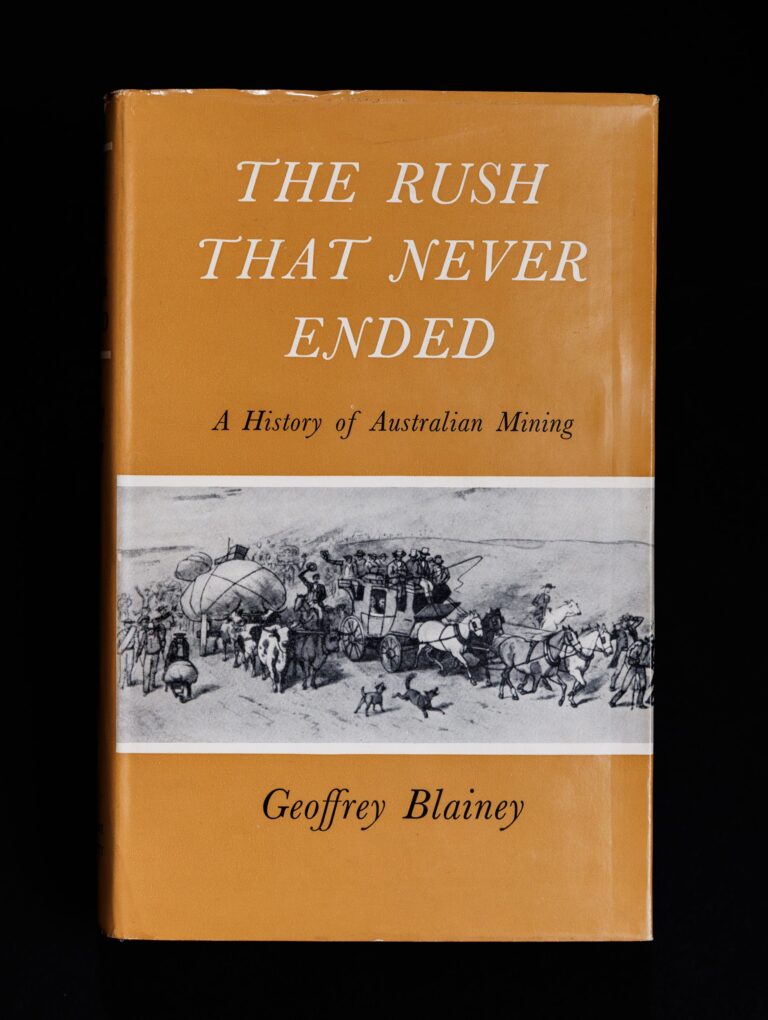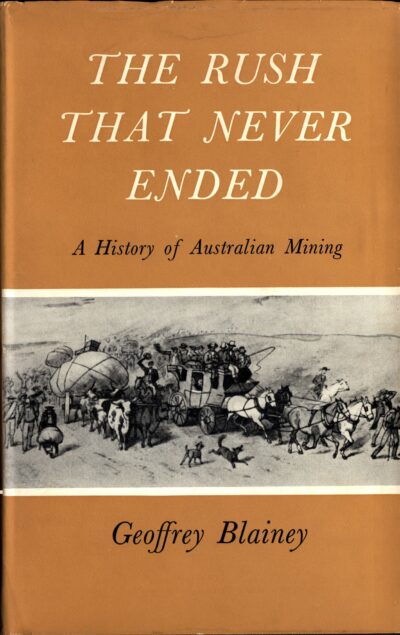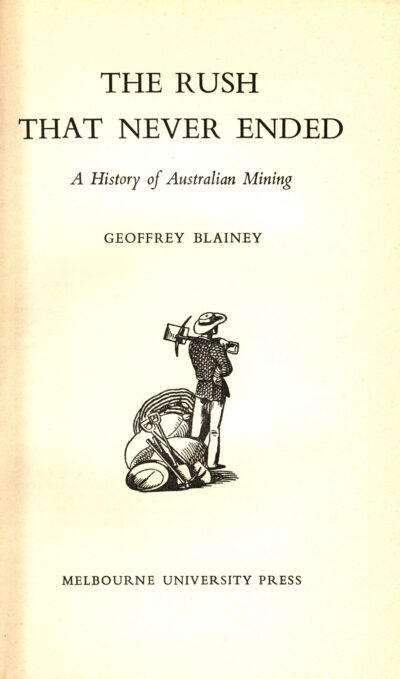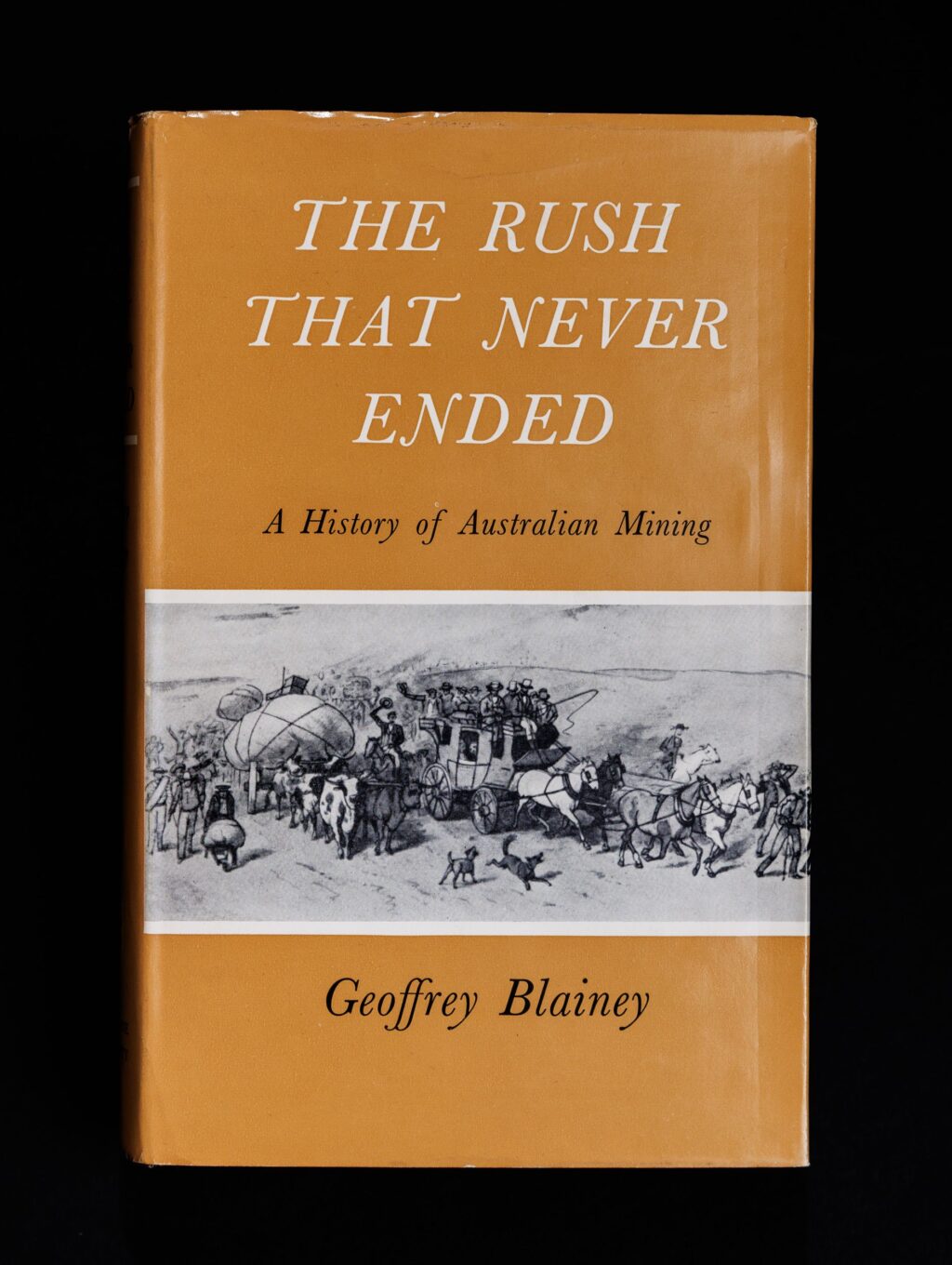Geoffrey Blainey, The Rush that Never Ended : A History of Australian Mining (1963)
The Menzies era is often described as the period in which modern Australia was ‘built’. There are all sorts of important transitions that one could note in making such an argument: the spread of suburbia, the rise of consumerism, consistent mass immigration from outside the British isles, a massive rise in the percentage of the population who attended university, the gradual erosion of the White Australia policy and more. But perhaps the most important transition which helped to underpin many of the others was economic, in the reorientation of Australia’s trade towards Asia and the beginning of a massive increase in our minerals exports such that they would soon replace wool and wheat as our most important trading commodities.
In 1963 this process was only just beginning, with the first export license for iron ore having been granted just three years prior and important changes then being made to allow vital Japanese investment in the industry. Hence the triumphalism of the first edition of Geoffrey Blainey’s The Rush that Never Ended is if anything underplayed, as the book would be re-released with new expansions over the years. Culminating in a fifth edition, released in 2003, and bringing the story all the way up to the turn of the twenty-first century. By which time, mining had well and truly replaced the sheep’s back as our nation’s ticket to prosperity.
Sir Robert Menzies features in the original just once, in a notable discussion of the moderate unionism of his grandfather, whom Menzies would often debate politics with during his formative years:
‘The miners’ union was watchdog rather than bulldog. John Sampson, a working miner of high skill and character, was first president of the A.M.A. [Australian Miners’ Association] branch at Creswick (the town known as the holy ground of Australian unionism) and his political principles were not unlike those of his grandson, Sir Robert Menzies, Australia’s prime minister. The A.M.A. was rarely militant. It knew that men who risked their savings in mining shares deserved a high reward, and begrudged no company its high dividends. It did not demand excessive wages, knowing that they might close useful mines or reduce the dividend in successful mines. There was no sharp rift between shareholders and wages miners. Thousands of miners themselves were shareholders, for goldmining was the one industry in which the humble employee was in the best position to speculate. If a new reef was found, underground miners often sent secret messages to a stockbroker in the town and bought shares before they rose dramatically. As the price of gold fixed, the working miner could not be outwitted by city speculators who understood prices. Thus share registers of Victorian companies were sprinkled with the names of miners. The classes of occupation that provided most insolvencies in Victoria in some years were publicans and miners. Some of the insolvent hotel keepers no doubt had been miners who made enough from shares to buy the pub.’
This passage speaks to Australia as both the ‘working man’s paradise’ of the Labor tradition, and as a land of opportunity and social mobility, values that would become essential to the tradition of Australian liberalism. It also speaks to the absurdity of preaching class conflict, in a land where the classes have never been particularly rigid or easy to define, and where cooperative endeavour has often produced great wealth for employer and employee alike.
You might also like...
Sign up to our newsletter
Sign up for our monthly newsletter to hear the latest news and receive information about upcoming events.






